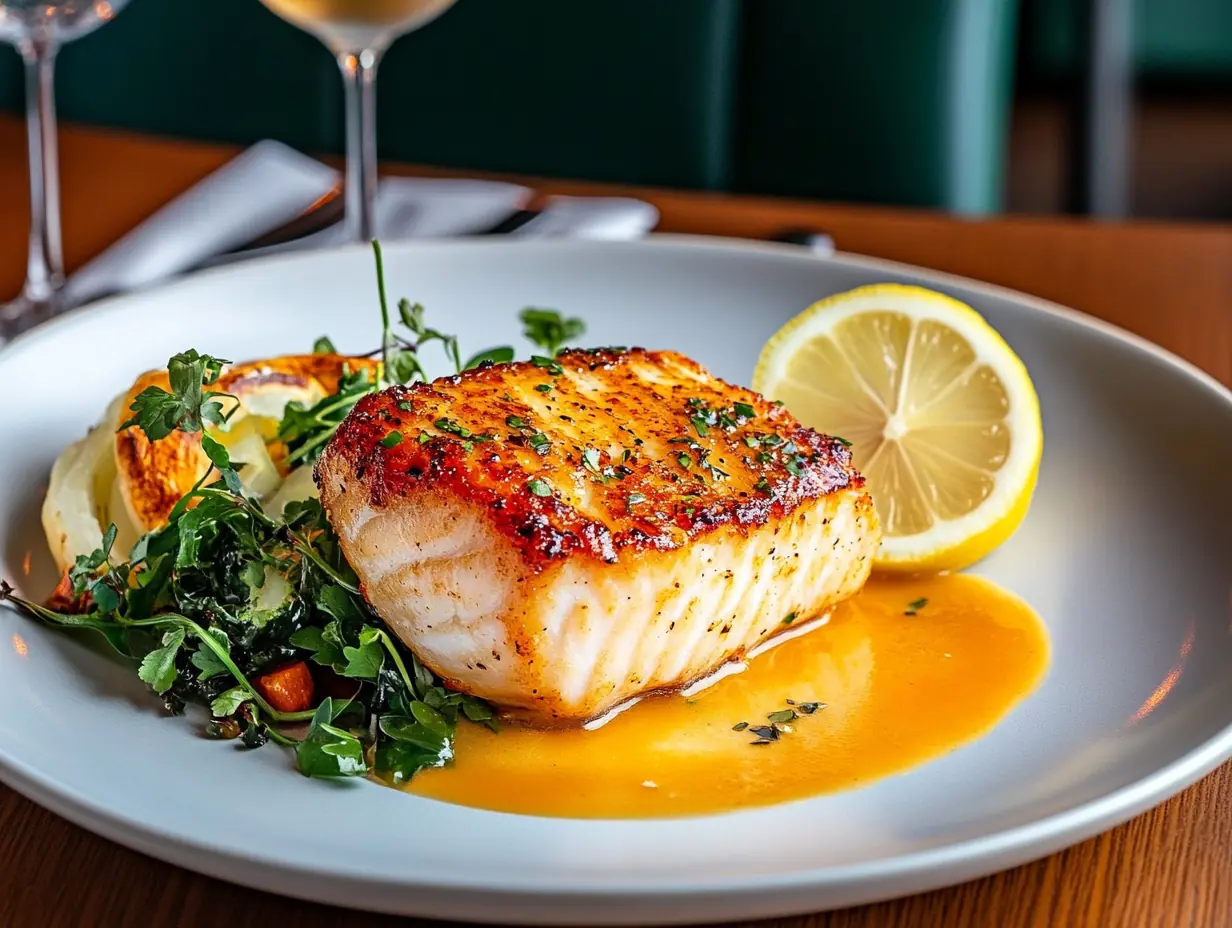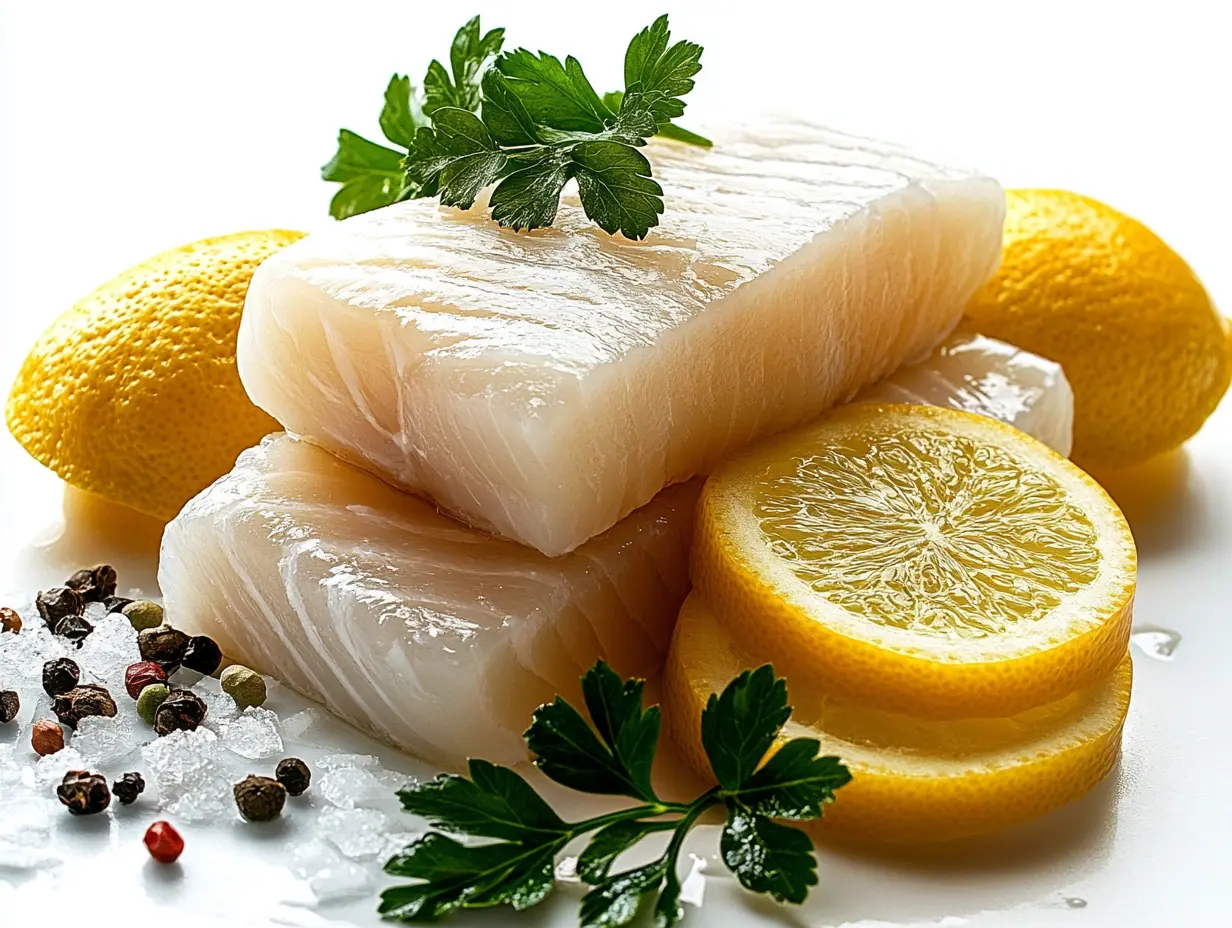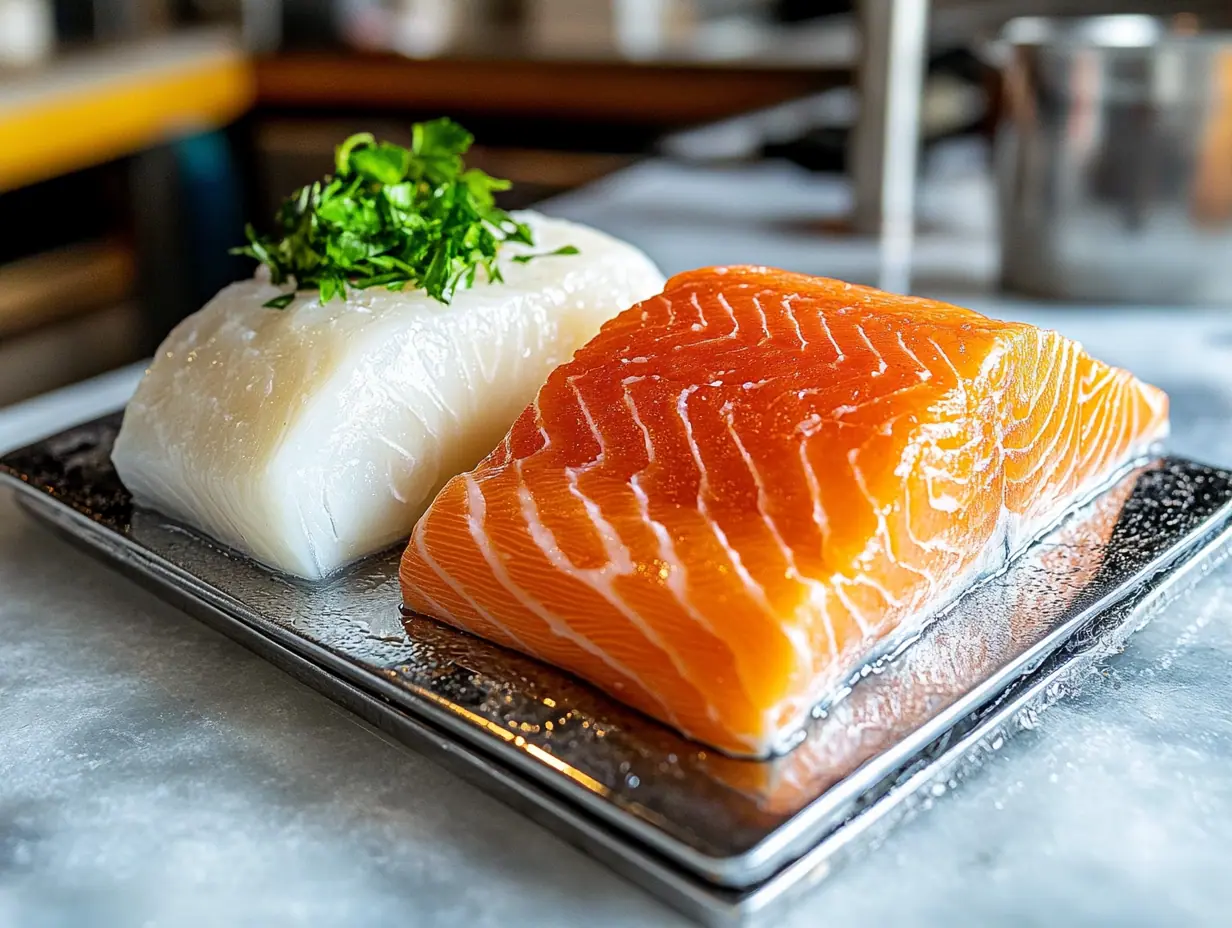Part 1: Understanding Black Cod and its Price Factors

Introduction
Black cod, also known as sablefish, is a premium seafood choice prized for its rich flavor and silky texture. Often found on the menus of fine dining establishments, it commands a higher price than many other types of fish. But why is black cod more expensive?
The growing demand for black cod in international markets, combined with sustainable fishing practices, has made this fish a luxury item. The high price is a result of its limited availability, resource-intensive harvesting, and the environmental care involved in its fishing. You can learn more about black cod’s role in premium dining from Lummi Island Wild.
What is Black Cod?

Black cod, or sablefish, is renowned for its rich, buttery flavor and oily texture, making it a favorite among chefs and home cooks alike. Unlike other types of cod, sablefish is packed with omega-3 fatty acids, giving it both nutritional and flavor advantages. The high-fat content of sablefish results in a delicate texture, allowing it to stay moist and tender during cooking.
Nutritionally, black cod is a powerhouse, offering a variety of health benefits. It is a high-protein fish that is low in carbohydrates and packed with heart-healthy omega-3s. These fatty acids provide numerous health benefits, such as improving heart health, reducing cholesterol levels, and supporting brain function.. The nutritional profile of black cod makes it an ideal choice for those looking to add more seafood to their diet without compromising on flavor.
One of the key factors that distinguishes black cod from other types of cod, such as Atlantic cod or Pacific cod, is its high-fat content. This fat gives black cod its distinct silky texture and allows it to remain juicy even when cooked at higher temperatures. In contrast, Atlantic cod tends to be leaner and has a firmer texture, making it less forgiving when overcooked. This difference in texture and flavor makes black cod more desirable, especially in dishes that require slow cooking methods, such as miso-glazed black cod.
Another reason for the popularity of black cod is its versatility. It can be baked, broiled, grilled, or pan-fried, and it pairs well with a wide variety of seasonings and marinades. This adaptability has made black cod a favorite ingredient in both Japanese and Western cuisine. For more detailed nutritional insights about black cod, check out this article from The Alaska Salmon Co..
Sustainable Fishing Practices and Its Impact on Price

One of the key reasons for black cod’s high cost is the sustainable fishing methods used to harvest it. Fishermen primarily catch black cod using longline fishing, a technique that reduces bycatch and minimizes damage to the ocean floor.. This method is not only more sustainable but also more expensive, as it requires specialized equipment and careful management.
The Marine Stewardship Council (MSC) certification ensures that fisheries harvest black cod in an environmentally responsible way.. Fisheries that earn this certification must adhere to strict sustainability standards, which includes monitoring fish populations, ensuring the health of marine ecosystems, and managing bycatch. These sustainable practices help maintain black cod populations, but they also increase the cost of harvesting the fish.
Additionally, quotas and regulations are in place to prevent overfishing of black cod. These regulations, while essential for maintaining long-term population health, limit the supply of black cod, making it more expensive. The costs associated with complying with these rules—such as licenses, monitoring, and reporting—add to the overall price that consumers pay for this fish.
Sustainable fishing methods, like those used in black cod harvesting, ensure environmental balance. You can also check out this article on black cod recipes for more details on preparing this sustainable fish.
Black Cod’s Natural Habitat and Its Role in Pricing
Black cod thrives in the deep, cold waters of the Pacific Ocean, particularly off the coasts of Alaska, British Columbia, and Japan. The conditions required to catch black cod are both resource-intensive and labor-intensive, contributing to its higher price.
Fishing for black cod requires specialized equipment to reach its deep-water habitat, often 1,000 to 3,000 feet below the surface. Deep-sea fishing involves higher fuel costs, more time on the water, and the need for skilled crews. These factors make harvesting black cod far more costly than surface-dwelling fish.
In addition to the challenges of deep-sea fishing, black cod is a limited resource due to its natural habitat and population size. The species matures slowly, which means it takes longer to replenish populations, further contributing to its limited availability. This scarcity, combined with seasonal availability, causes prices to fluctuate. During the off-season or when demand spikes, the cost of black cod can increase significantly.
Popularity in Global Cuisine

Black cod has a prominent place in fine dining, particularly in Japanese and American cuisine. Its miso-glazed preparation, a signature dish made famous by celebrity chefs like Nobu Matsuhisa, showcases the fish’s ability to absorb flavors while maintaining its rich texture. The combination of the fish’s high fat content and buttery flavor makes it ideal for techniques like slow roasting or smoking, enhancing the luxurious mouthfeel.
As demand for black cod has grown internationally, so too has its price. In markets like the U.S., Japan, and Europe, black cod is sought after by top-tier restaurants, where it commands a premium price. Its adaptability to different cuisines and cooking techniques, along with its scarcity, only increases its value.
This global demand plays a significant role in driving up the price of black cod. With its reputation as a delicacy and its widespread appeal, black cod has become a high-priced commodity on the seafood market.
Black cod’s popularity in fine dining, especially in Japanese cuisine, mirrors the versatility of other premium dishes. For a different take, you might explore this easy Bibibop copycat chicken recipe for its fusion appeal.
Part 2: Further Factors Influencing Black Cod Pricing
Limited Supply and High Demand
One of the primary reasons black cod is so expensive is the limited supply of the fish. Black cod is less abundant than other fish, and authorities carefully manage its population through strict fishing quotas and sustainability regulations.. These quotas limit the number of black cod harvested each season, ensuring the fish population stays healthy. However, this also means that there is less black cod available to meet growing consumer demand, which naturally drives up the price.
The increasing demand for black cod from high-end restaurants and seafood markets further exacerbates the issue of limited supply. Chefs and culinary professionals value black cod for its versatility, rich flavor, and unique texture, making it a sought-after ingredient in fine dining. Chefs favor black cod for its versatility, as they can prepare it using various cooking methods, from slow roasting to grilling, to create sophisticated and flavorful dishes..
The scarcity of black cod is particularly noticeable in regions where the fish is less readily available. Consumers in areas where black cod is not commonly fished may pay a premium to have it shipped from other regions. This adds to the overall cost, making black cod even more expensive in certain parts of the world. The combination of limited supply, high demand, and regional scarcity has contributed to the high price of black cod.
Fishing Costs and Logistics
Fishing for black cod is a labor-intensive and costly process. The fish’s deep-water habitat requires fishermen to venture far out into the ocean and use specialized equipment, such as longlines, to reach the fish. This method of fishing is more selective and sustainable, but it also requires more time, fuel, and resources than surface fishing methods. The cost of operating fishing vessels, paying crew wages, and maintaining equipment all contribute to the high price of black cod.
In addition to the direct costs of fishing, the logistics of processing and transporting black cod also play a role in its pricing. Handlers must carefully manage the fish after it’s caught to maintain its freshness and quality. Depending on the market, sellers handle and transport black cod using specific protocols, whether it’s sold fresh or frozen. For example, processing and shipping fresh black cod quickly to avoid spoilage adds significant costs. Frozen black cod requires cold storage and transportation, adding another layer of expense to the supply chain.
Fuel costs are another factor that significantly impacts the price of black cod. Deep-sea fishing trips are longer and require more fuel than coastal fishing trips. The distance that fishing vessels must travel to reach black cod fishing grounds adds to the overall cost of harvesting the fish. Rising fuel prices increase costs, which suppliers pass down through the supply chain, resulting in higher prices for consumers.
The logistics and high operational costs involved in deep-sea fishing for black cod further contribute to its premium price. Just like with cod, this easy 3-ingredient sloppy joe recipe offers an affordable yet delicious alternative.
Comparison of Black Cod and Other High-Value Fish

When compared to other luxury fish like Chilean sea bass and halibut, black cod holds its own in terms of price and quality. Chilean sea bass, for example, is often more expensive than black cod due to its overfished status and the difficulty of sourcing it sustainably. However, many consumers and chefs prefer black cod for its buttery texture and rich flavor, which some argue surpasses that of Chilean sea bass.
Halibut is another high-value fish that is often compared to black cod. While halibut is leaner and has a firmer texture, it lacks the oily richness of black cod. This makes black cod more desirable for dishes that require a moist, flaky texture. Black cod offers a more ethical choice than Chilean sea bass, as fisheries carefully manage its population and use less harmful harvesting practices for the environment.
Black cod is a sustainable and ethical alternative to other luxury fish due to its MSC certification and the sustainable fishing practices used to harvest it. Consumers who are concerned about the environmental impact of their food choices may be willing to pay more for black cod, knowing that it is a responsible choice.
FAQs
Why is black cod more expensive than regular cod?
Black cod is more expensive than regular cod because it is less abundant, more difficult to harvest, and requires more sustainable fishing practices. Additionally, black cod’s rich flavor and high fat content make it a premium choice compared to the leaner, milder regular cod varieties.
Is black cod considered a luxury fish?
Yes, black cod is a luxury fish because of its buttery texture, rich flavor, and popularity in fine dining. Its versatility and high demand in both Japanese and Western cuisine contribute to its status as a high-end seafood option.
How does the nutritional value of black cod justify its price?
The high levels of omega-3 fatty acids in black cod provide numerous health benefits, including improved heart health and reduced inflammation. Its nutritional value, combined with its rich flavor and texture, makes black cod a desirable and nutritious choice. This justifies its higher price..
Why is black cod so popular in Japanese cuisine?
Black cod is a staple in Japanese cuisine due to its oily texture and ability to absorb flavors. The famous miso-glazed black cod dish, which uses a miso-based marinade… Is a prime example of how black cod can elevate traditional Japanese dishes.
Is black cod worth the high price?
For many chefs and seafood enthusiasts… Black cod is worth the price due to its delicate flavor, silky texture, and sustainability. The fish’s versatility and its ability to remain moist even after cooking make it a favorite in fine dining and home kitchens alike.
How can I ensure the black cod I purchase is sustainably sourced?
Look for certifications like the Marine Stewardship Council (MSC) on packaging, or buy from trusted suppliers committed to sustainable fishing practices. These certifications ensure you purchase responsibly harvested black cod.
Conclusion
Black cod stands out for its rich flavor, unique texture, and sustainability. The higher price of black cod comes from the resource-intensive nature of deep-sea fishing, sustainability practices, and global demand… But its quality and taste make it a prized item in many kitchens.. For those who appreciate premium seafood, black cod offers an indulgent, yet environmentally conscious option.